
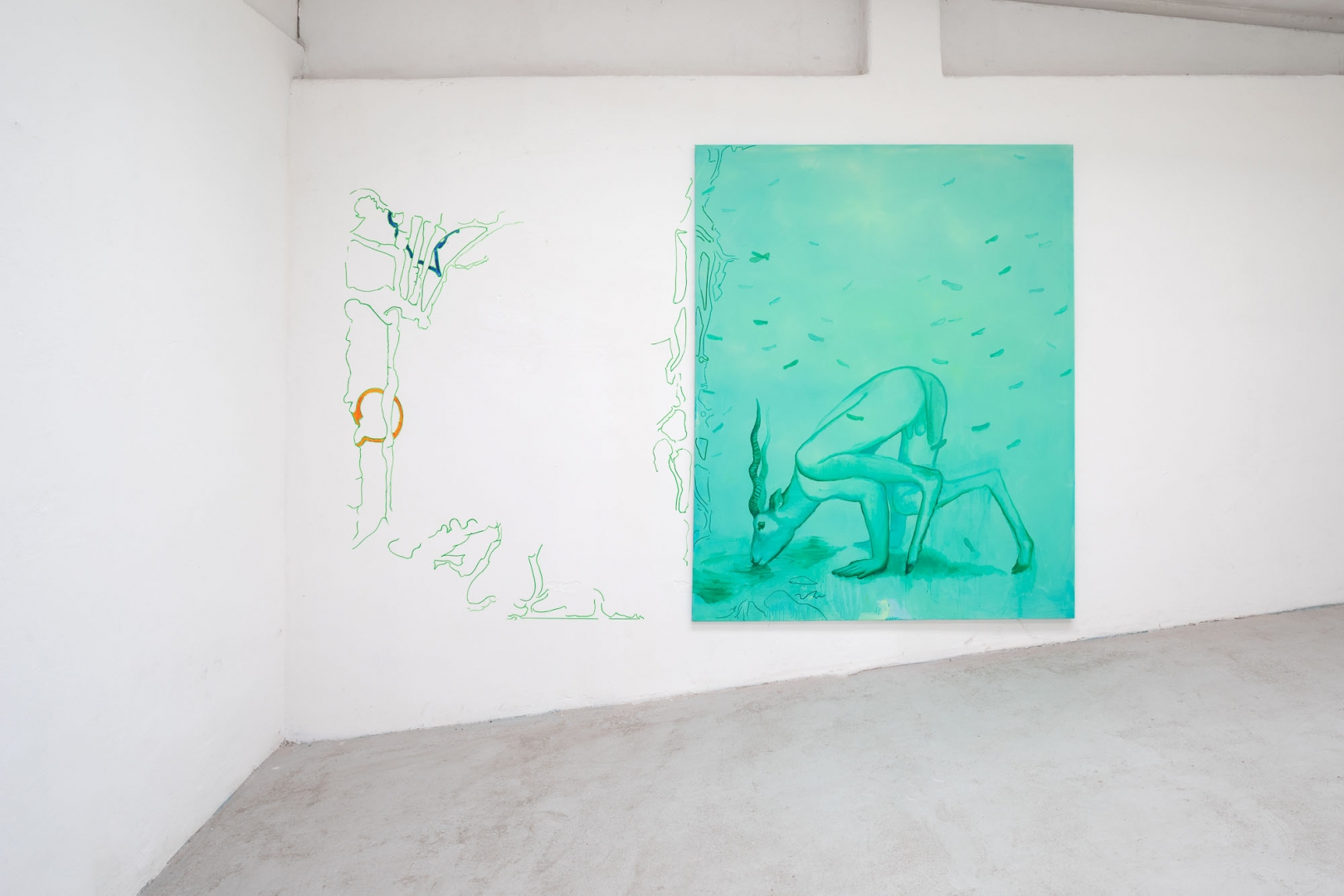
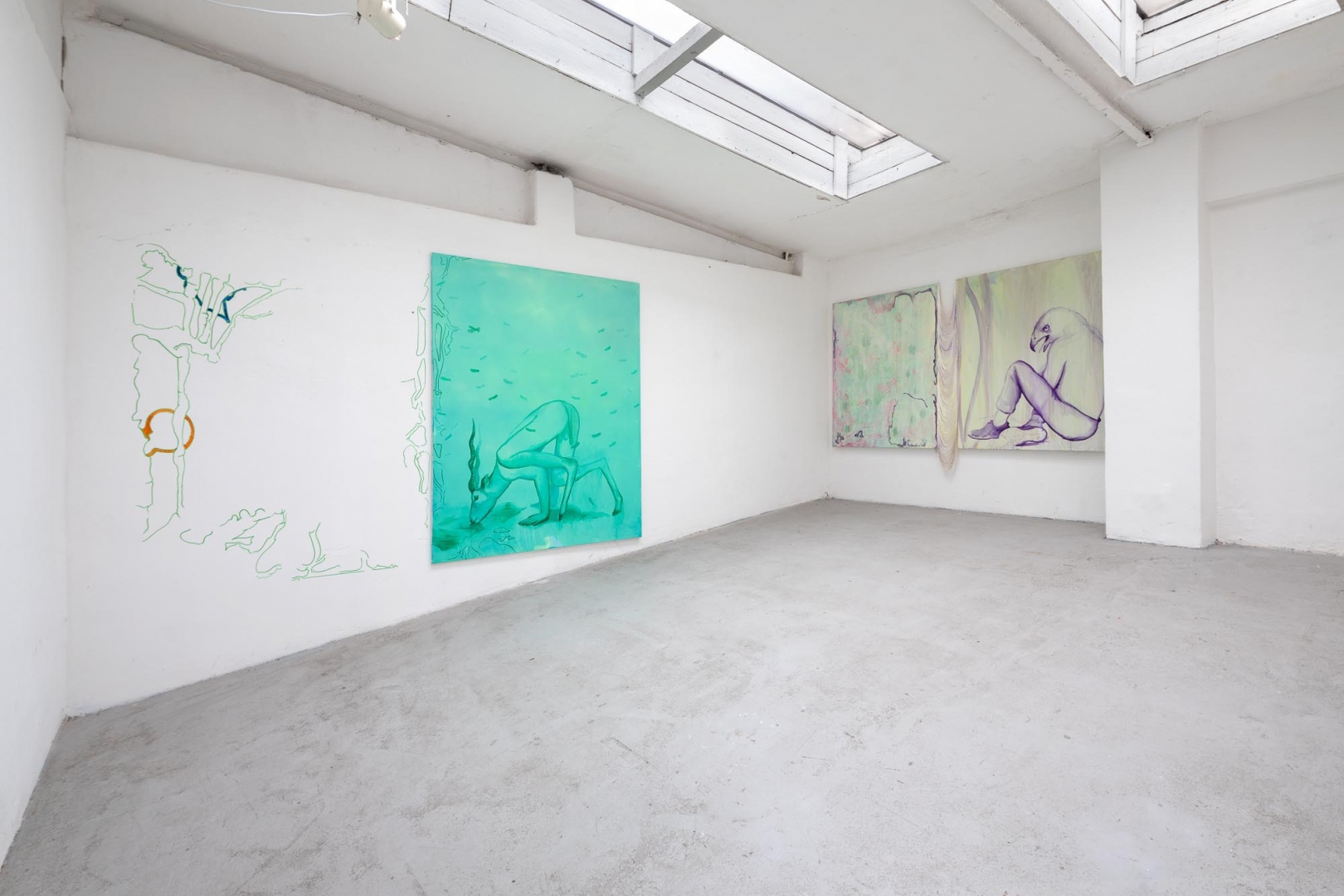
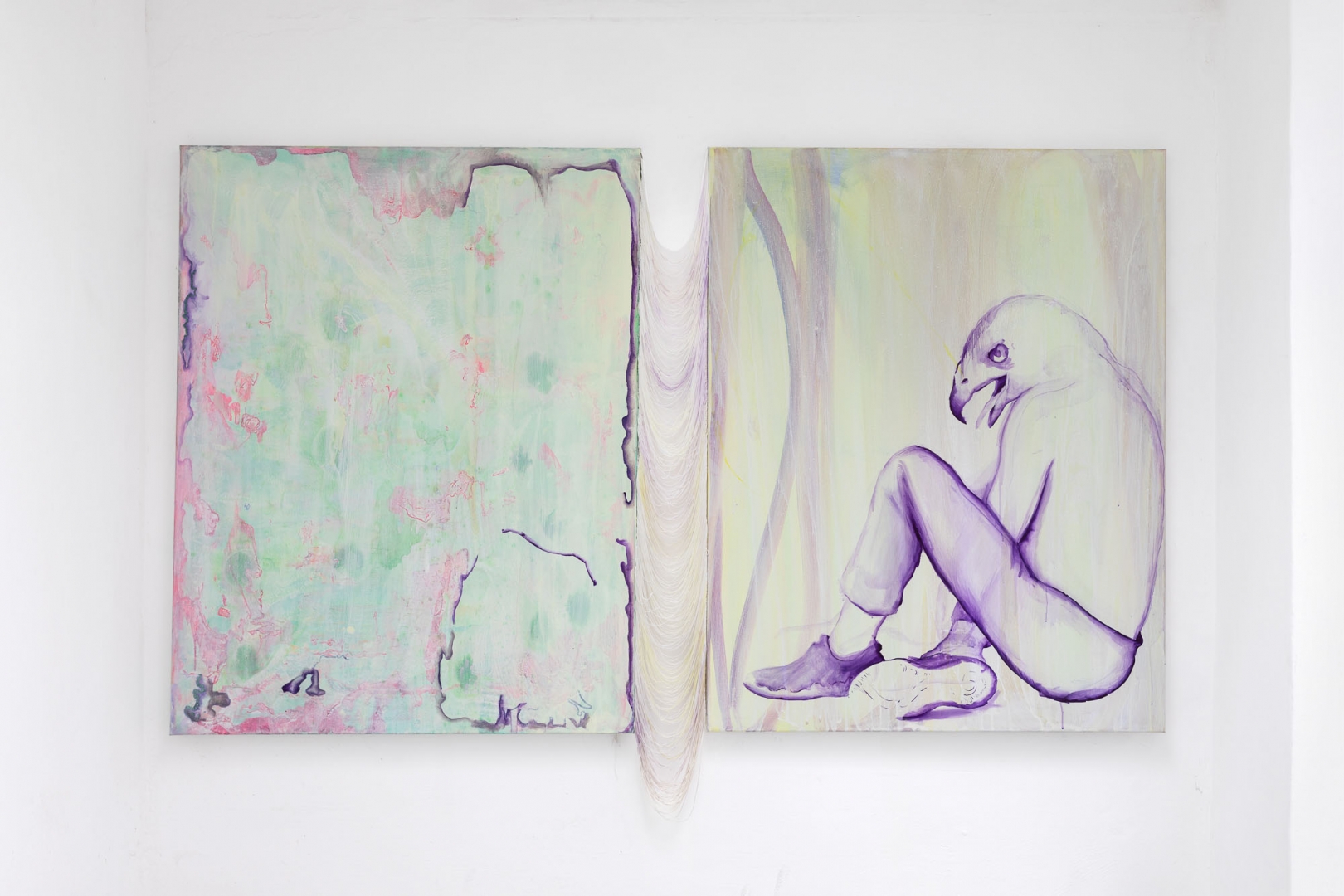


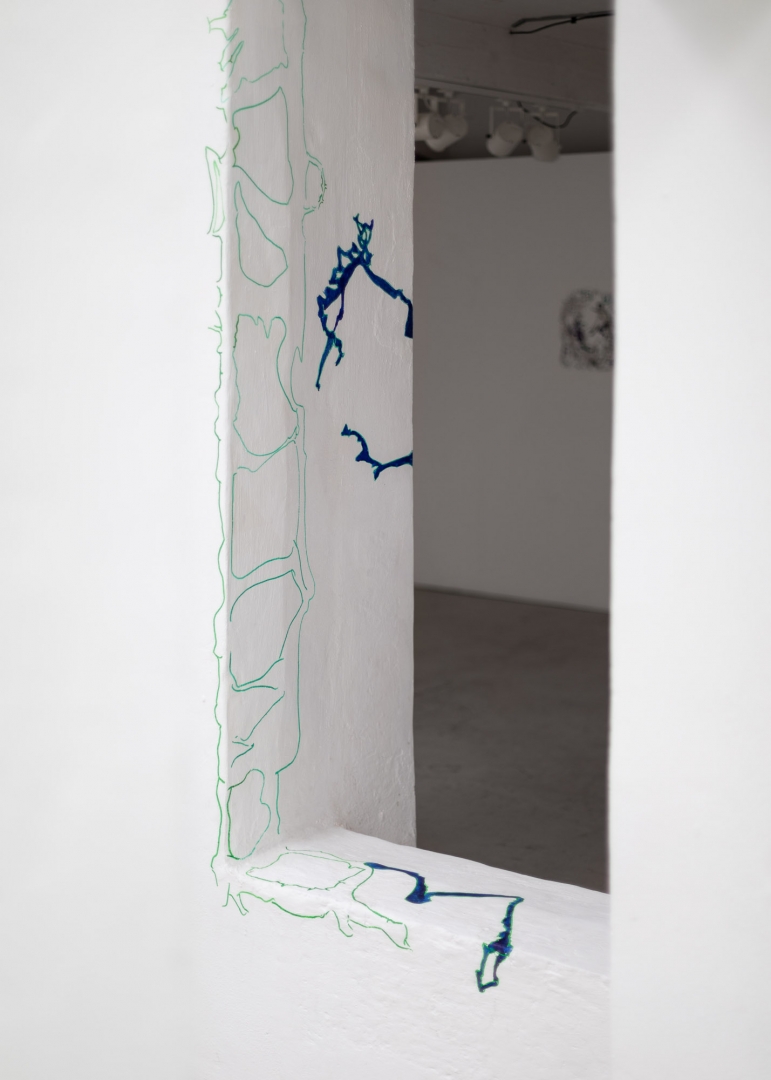
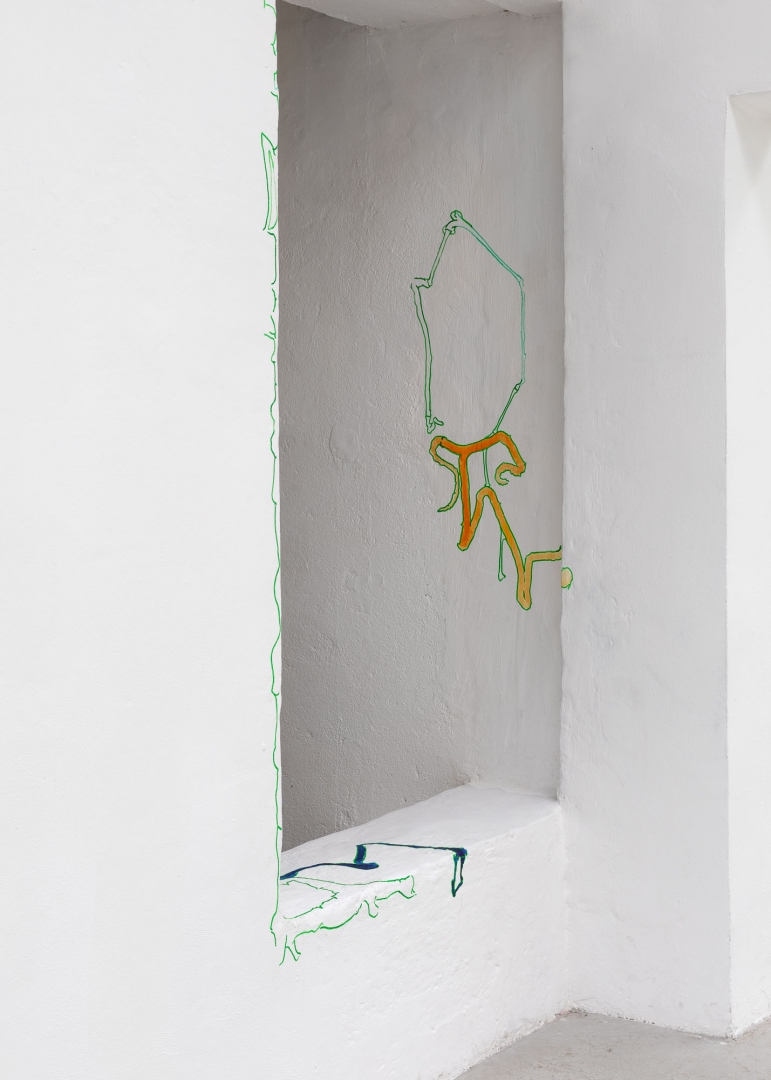


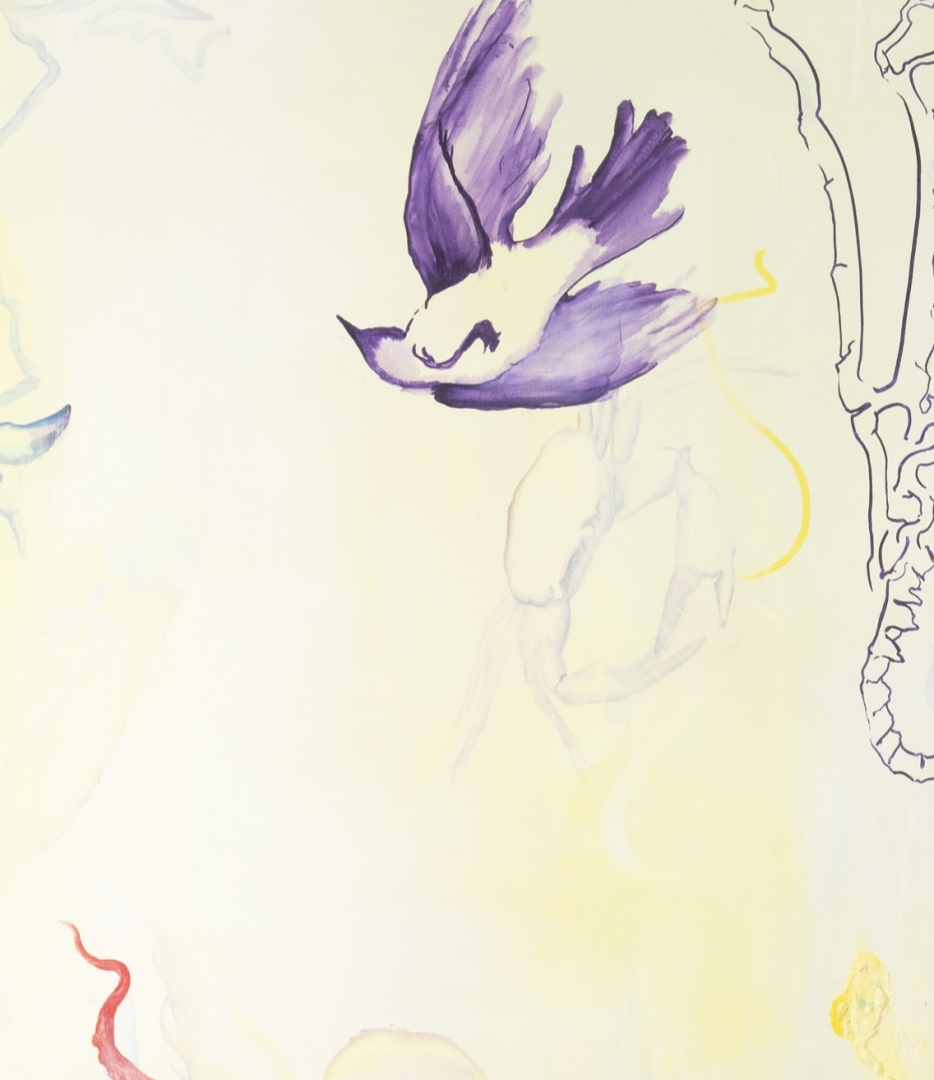
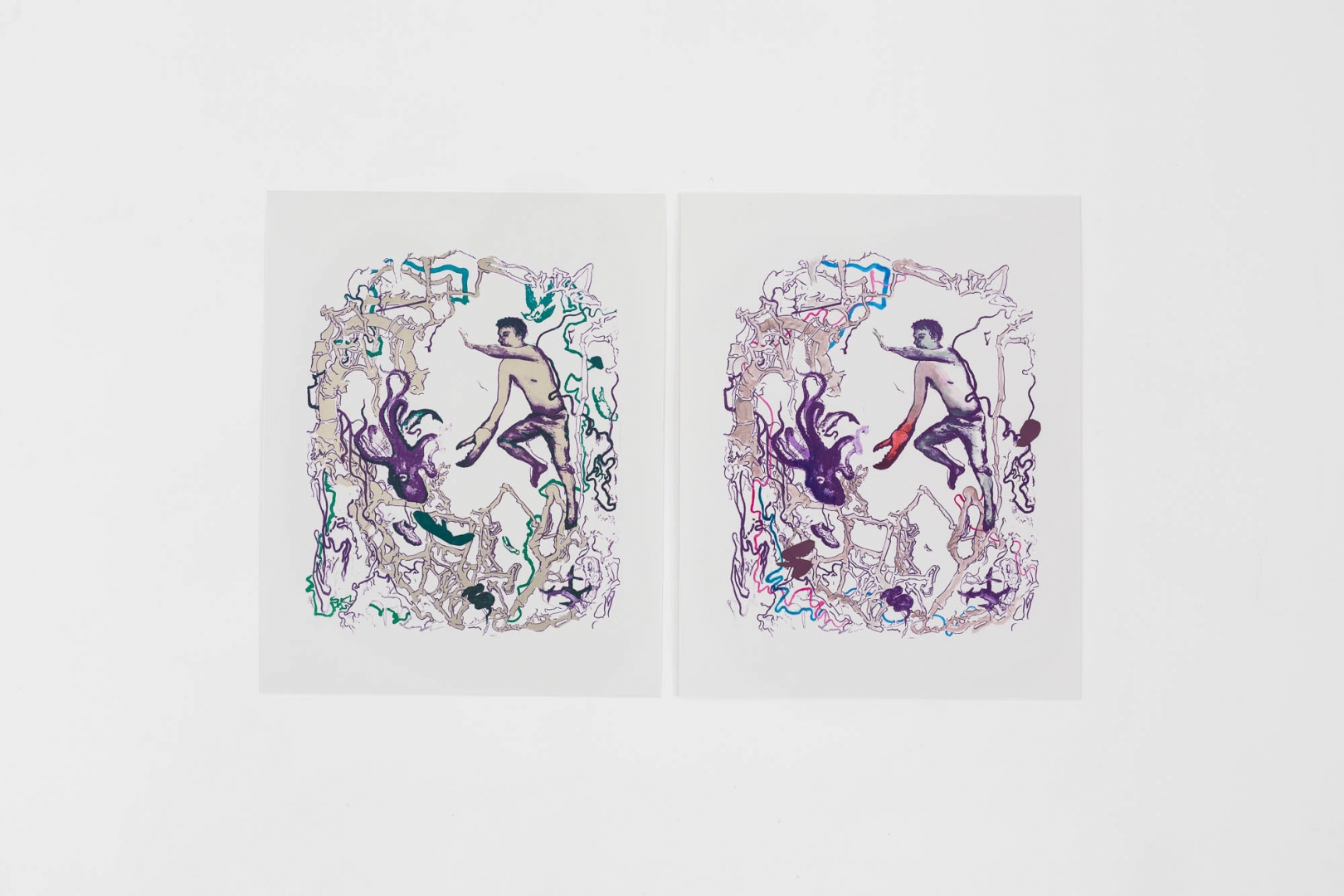
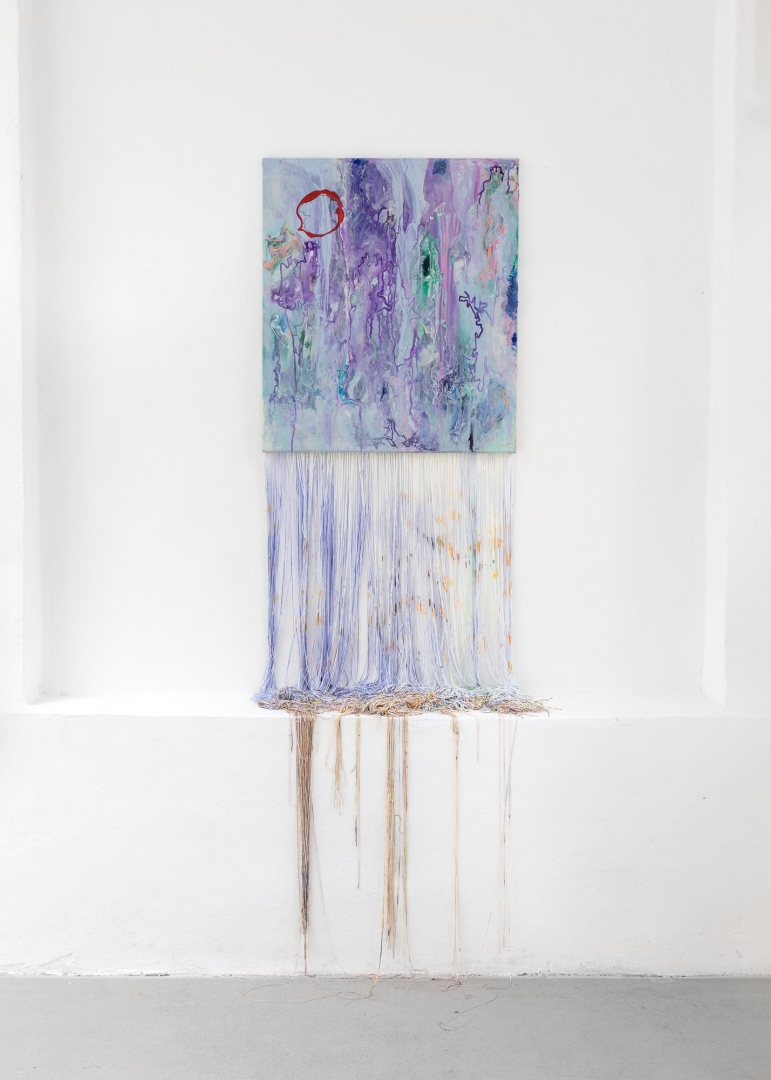


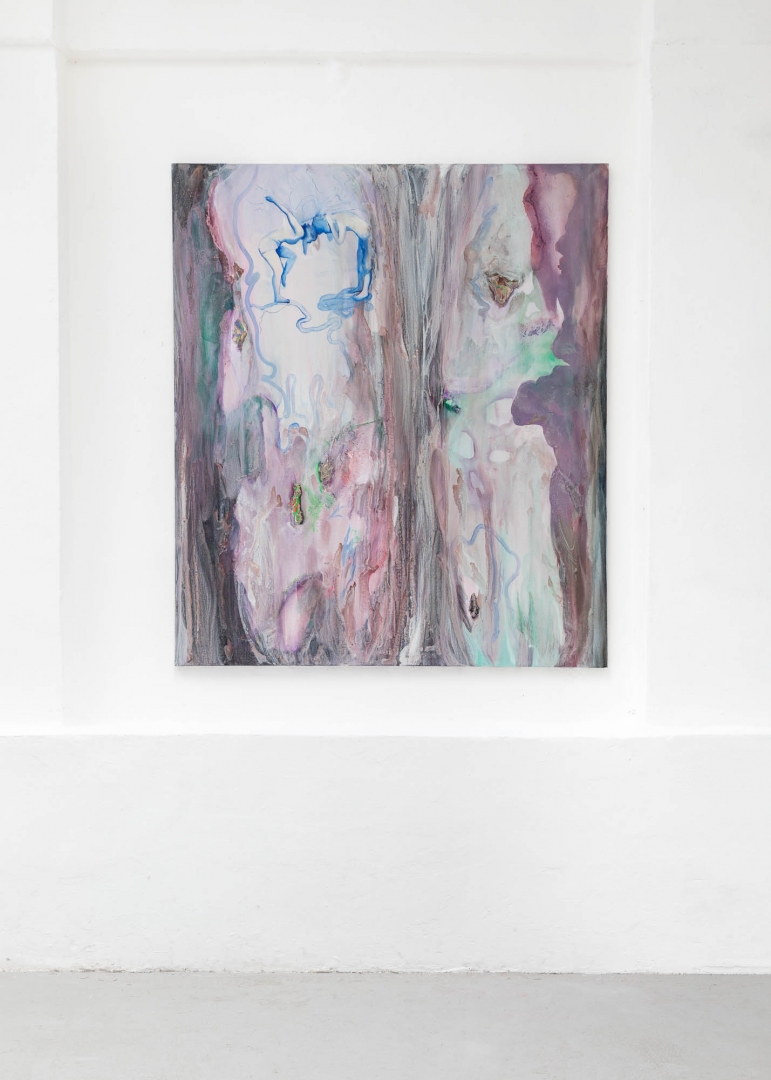
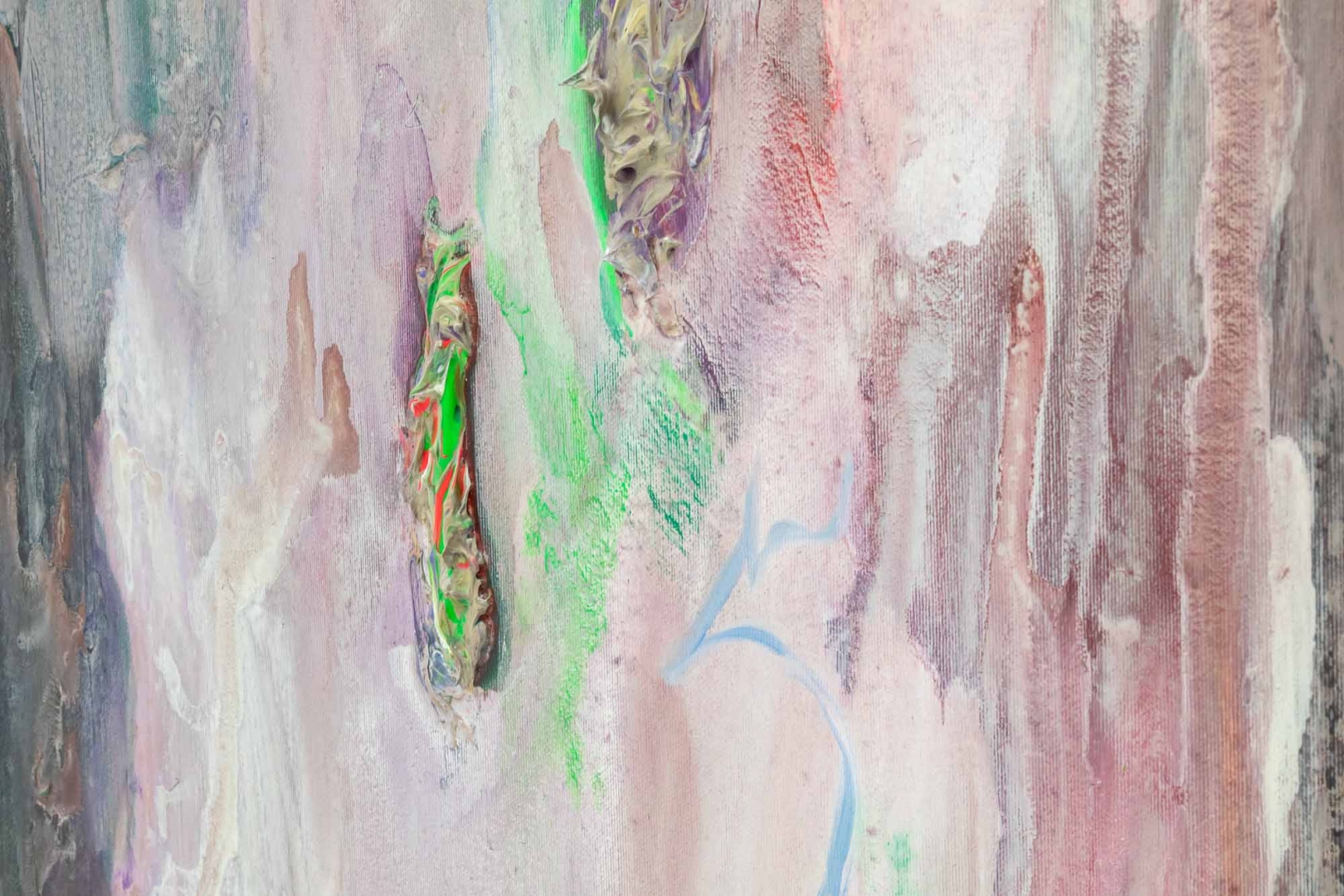
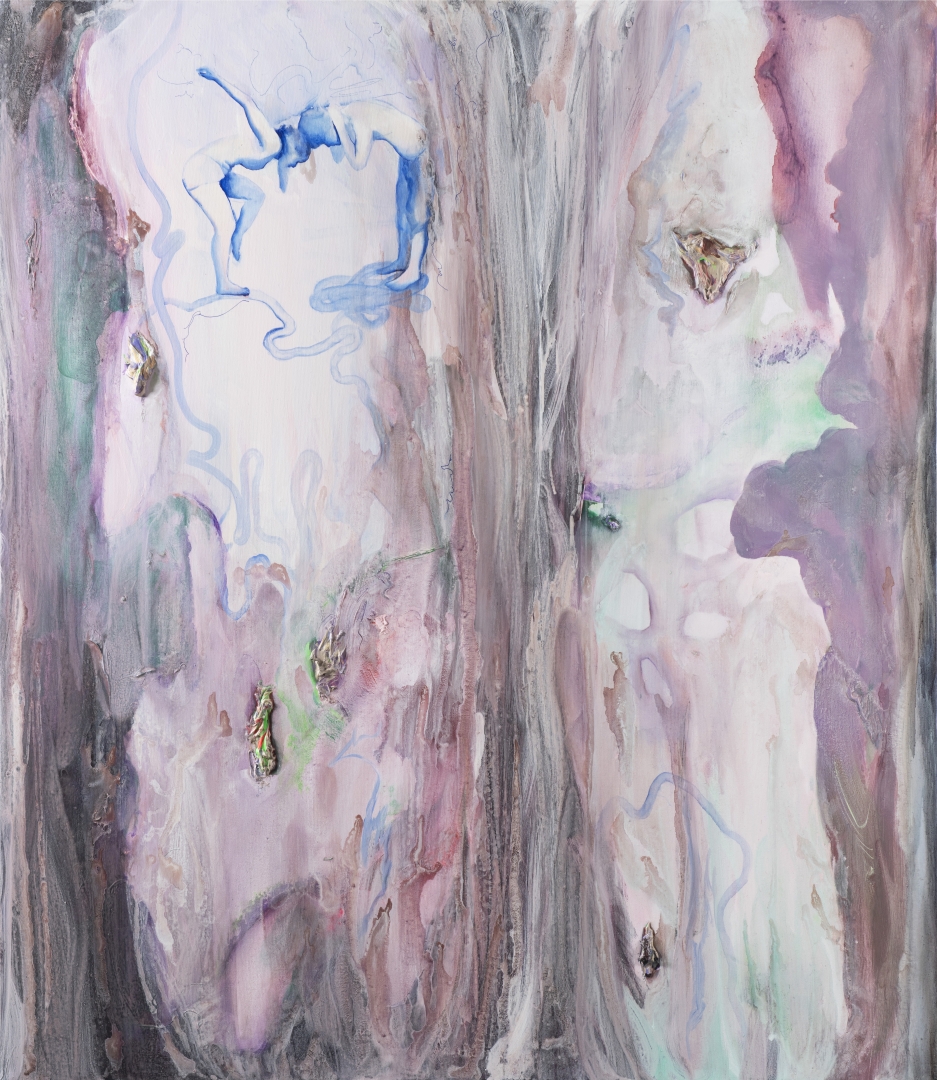
A Tale of Disharmony, Prám Studios, Prague (2021)
curator: Šárka Koudelová
Během minulého, obecně znepokojivého roku, Pavel latentní dichotomii, přítomnou nejen ve světlech a stínech svých motivů, formálně usadil do intuitivně vznikajících diptychů. Co bylo vlastně historickým impulsem pro vznik tohoto typu dvoj-obrazu? Zřejmě směs důvodů, které rezonují i v přístupu Pavla Příkaského. Dva více či méně pevně spojené panely snadno evokují otevřenou knihu, dají se zavřít, aby se nepoškodily při případném přesunu nebo naopak otevřením vytvořit prostor pro modlení či prosté soustředění myšlenek. Důvodem také může být nutnost zobrazit protikladné atributy, které však nelze oddělit. Vnitřnosti a exteriér, souznění a disharmonii.
Třásněmi svázaný diptych obydluje romanticky skleslá figura muže s ptačí hlavou, který může být stejně dobře hrdinou blíže neurčeného fantasy světa jako moderním Mínótaurem, uvězněným ve svém osudu i dystopickém labyrintu současných krizí. Stejně jako jediné jedinečné a nejrozměrnější plátno ve výstavě se také svojí boschovskou mutantí figurací odkazuje k renesanční malbě, která je symptomatickou směsí ideálů a temných zákoutí lidské duše, jež jsou opět humanisticky povoleny. Je historie lidských civilizací neustálým balancem mezi cukrem a bičem, neukázněnou chůzí nad propastí zkázy – příběhem disharmonie? Člověk je ve své neudržitelné touze po nekonečném materiálním růstu ustavičným rizikem sám pro sebe i křehkou rovnováhu života na zemi. Otrávení holubi padají mrtví z nebe a Krab modrý je přemnožen, likviduje kolonie ryb i živobytí rybářů. Na vině je samozřejmě člověkem způsobená klimatická krize a oteplování moří. V roce 2018 ve své vědecké zprávě Mezivládní panel pro změny klimatu uvedl, že na přechod na obnovitelné zdroje máme jen 12 let času, abychom odvrátili katastrofický vývoj. O rok později nás pandemie covidu-19 důrazně upozornila na přirozený mechanismus přírody, věčně hledající udržitelnou harmonii a možnost, že lidstvo je tou zbytnou entitou pomyslného balancu se jeví velmi reálně. Přesto se nezdá, že bychom učinili nutný pokrok. Insekticid DDT byl prý v 70. letech konečně zakázán, protože se lidé lekli, že už by neslyšeli zpívat ptáky. Jaké důvody potřebujeme teď?
Výňatek z textu Šárky Koudelové
The fringed diptych is inhabited by a romantically depressed figure of a man with a bird’s head, who could be either the hero of an undefined fantasy world or a modern day Minotaur, imprisoned by his destiny as well as by the dystopian labyrinth of current crises. The diptych, along with the largest and the only singular canvas in the exhibition, makes reference to the art of Renaissance painting through its mutant figuration resembling Hieronymus Bosch, which represents a symptomatic mixture of ideals and the dark corners of the human soul, which are again humanistically permitted. Is the history of human civilizations a continual balancing act between the carrot and stick, undisciplined walking above the abyss of destruction – a tale of disharmony? Humans, in their overwhelming desire for never-ending material growth, pose a constant risk both to themselves and the fragile balance of life on Earth. Poisoned pigeons fall dead from the sky and the Blue crab is overpopulated, destroying colonies of fish and the livelihoods of fishermen. The blame for the climate crisis and the warming of the sea lies, of course, squarely with mankind. In 2018, in its scientific report, the Intergovernmental Panel on Climate Change stated that there were only 12 years left to switch to renewable energy sources to avert catastrophic developments. A year later, the COVID-19 pandemic bluntly warned us of the mechanism of nature, which eternally searches for sustainable harmony. Now, it seems realistic to assume that mankind is a dispensable entity within that imaginary balance. Unfortunately, there is nothing to suggest that we will make the necessary progress. The use of the insecticide DDT was finally banned in the 1970s because people feared they would not hear birdsong again. What reasons do we need now?
Pavel Příkaský, at almost the same time, is presenting a solo exhibition in Galerie Svatý Havel in Mladá Boleslav, opening an imaginary diptych of the tabernacle – an exhibition telebridge, a zoom room for his heroes, a new galaxy for a society that has averted collapse.
/Šárka Koudelová, 2021/

















